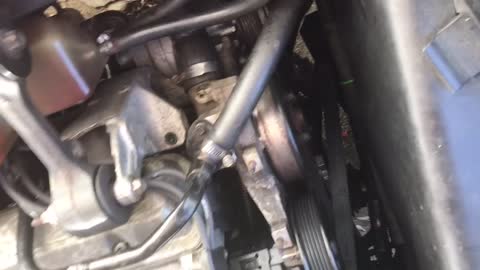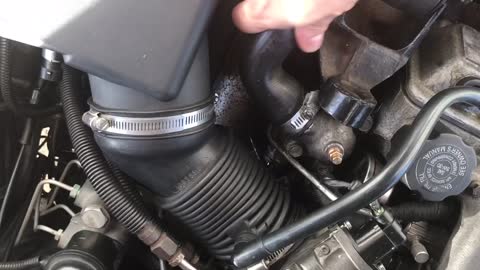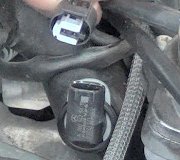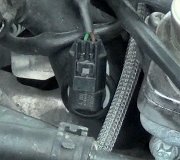Your logic makes sense, but let me share a few tidbits of value. In the late '90s, there was a service bulletin pertaining to one car model with one engine, and how to inspect the cylinder head and head gasket, then how to perform the repair. Many of those started leaking before 20,000 miles or two years. Most of those same engines went well over 100,000 without a head gasket problem. That shows age and mileage aren't the only factors. Also, a family member bought a new 1980 Chevy Citation with the V-6 engine. That one used a quart of coolant every month since the car was brand new. There were no external leaks, but back then, leaking head gaskets were something we had never yet heard of and had no experience with. Today they are real common.
A lot of head gasket jobs are performed at the new-car dealerships because the vehicles are still under warranty. Some manufacturers are very picky and demand to see maintenance records as a way to get out of paying for warranty repairs. That includes regular cooling system service. Even with that scheduled maintenance, head gaskets can corrode through and start to leak.
The biggest area of confusion has to do with symptoms. It all depends on where the head gasket is leaking and how badly it's leaking. Too many people put all their faith in looking for milky-colored engine oil, but that is by far the least common failure. The cooling system won't have more the 16 pounds of pressure in any passage through the heads, and the oil in the drain-back holes has 0 pounds of pressure, and oil in the supply passages rarely has more than 50 pounds. That little difference in pressures is easy for a head gasket to seal. When oil and antifreeze mix, it forms a mud-colored slop with the consistency of light oil. If the driver does excessive short-trip driving where the engine never gets fully warmed up, you'll find a cream-colored goo under the oil fill cap, (looks like Elmer's Wood Glue), and often water droplets under the cap. The clue here is those drops of water are clear, not mud-colored, and they aren't mixing with the oil. That water is condensation from the humidity in the air that is pulled though the engine, then through the PCV valve. When you can shake the water drops off the cap, suspect short-trip driving before a leaking head gasket.
The biggest pressure difference is between the cylinder and anything else. When the fuel burns, the resulting real high pressure can be forced through a weak spot in the head gasket, and while that could go into an oil passage, it is far more likely to sneak into the cooling system because it's those passages that surround the cylinder and are closest to it.
When the leak is small between the cylinder and coolant passage, it takes the high pressure of combustion to force combustion gases through the leak, into the cooling system. This is what I suspect you have. If that occurs slowly enough or only after the engine has warmed up, the thermostat may already be open, then you'd see the stream of tiny bubbles in the radiator. That air is constantly getting past the thermostat so it's not pooling under it. At this point there may be no other symptoms.
As the leak becomes worse, during the intake stroke, the vacuum in the cylinder and the pressure in the cooling system can be enough to pull some coolant into the cylinder where it will be burned and go out the tail pipe as white smoke. There's a chemical test for this I'll describe in a minute. Another point of confusion is water vapor is a byproduct of a properly-working catalytic converter, so water dripping from the tail pipe, or a little steam from the tail pipe is normal. It's also common to see water dripping from a drain hole made for this purpose, in the bottom of the muffler.
Another place for a head gasket leak is from a coolant passage to outside the engine. My assumption is while those are not real common, I'd blame it on lack of maintenance of the cooling system. One of the additives in antifreeze is corrosion inhibitors, and those additives wear out in about two years. There will always be some combustion gases that sneak into the cooling system, and those are what promotes acid build-up and corroded head gaskets. I've only seen this type of external leak a few times, and those were on Ford four-cylinder engines in the late '90s. I did see this once on an early GM Quad-4 engine, but when the new gasket didn't solve the problem, the frustrated mechanic discovered the cylinder head was cracked in that corner. That was a one-time deal that we never saw again.
The chemical test I mentioned involves adding a small bottle of dark purple dye to the coolant, then checking a day later with a black light. Auto parts stores have the dye for the liquid being tested, and they should have a black light to borrow. The dye will show up as a bright yellow stain that you can follow back to the source of the leak. In this case, check for that inside the tail pipe. This is useful when you can't tell where the steam is coming from. If liquid is dripping from the tail pipe and it has a color, it is antifreeze.
For that chemical test to be effective, the leak has to be bad enough that the level in the reservoir will be going down. When that type of leak gets real bad, it can cause a failure of the engine to crank due to "hydro-lock". When the engine is stopped, the cooling system is still under pressure, and that fills the affected cylinder with coolant. That liquid can't be compressed, so if that piston is just coming up on top dead center on the compression stroke when you start to crank the engine, the piston will be stopped from moving. We just ran into this here last week with a Nissan.
It's mostly four-cylinder engine cooling systems that seem to have to be manually bled, but when that is done to any engine, it's a one-time thing. If air could be trapped in a pocket inside the engine, it would tend to stay there all the time, and bleeding wouldn't get it out. In reality, the only other place for it to become trapped is inside the heater core, but coolant circulates through that even when the thermostat isn't open. All the air is going to float to the thermostat and sit under it. Once removed, the thermostat will open normally, then any remaining small bubbles will rush right through to the radiator, then into the reservoir.
There's a more subtle clue you can look for. As soon as you stop a hot engine, look at the level in the reservoir, then check it again five minutes later. You'll see it has gone up a little. That's because the heat in the coolant was being carried away to the radiator, but now, with the engine off, heat is still coming off the cylinder walls into the coolant, but not being dispersed. That causes it to expand even more and get pushed into the reservoir. If you see a few bubbles showing up in the reservoir, that's the last remaining air in the radiator being pushed out. As the engine cools down, coolant will be drawn back in, and the reservoir level will go down.
If you continue to see those vapor bubbles in the reservoir after multiple warm-up / cool-down cycles, it has to be coming from somewhere, and that can only be through the head gasket. This is where the chemical test at the radiator is appropriate. When the leak is still small, you may have to vary the conditions to make the leak be detected. That could mean performing the test while the engine is still cold, or only when it is hot. You might need to raise engine speed to 1500 rpm, or it might only occur under load, meaning in gear, with engine speed raised slightly.
For my parting thought, engine parts normally get way too hot to touch, but they don't smoke. When you see smoke, it is either steam, vaporizing oil, or exhaust gases. When you see that, it has to be caused by the fluid leaking at that point and boiling off, or residue that collected in that area after a recent service. Residue evaporates away, then that's the last you'll see of it. If you continue to see smoke or steam, you have to look at where it came from and how it got there.
Sunday, June 16th, 2019 AT 6:08 PM




